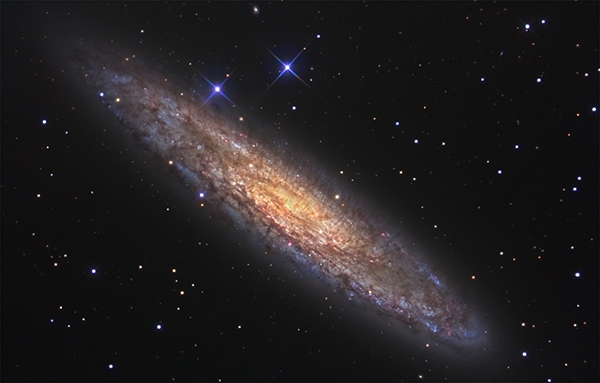Astronomers discover full glory of the Universe

In Summary
The Universe is actually twice as bright as was previously thought, according to research conducted by a team of astronomers from Australia and Europe.
In an article published in the Astrophysical Journal Letters, the astronomers describe how dust is obscuring approximately half the starlight that the Universe currently generates.
While astronomers have known for some time that the Universe contains small grains of silicate and graphite, they had underestimated the extent to which this dust is restricting the amount of light that we can see.
“When we look out into deep space, at the millions of other galaxies, it is as though we are wearing cosmic sunglasses – we’re only seeing half the show,” said Dr Alister Graham an astrophysicist from Swinburne University of Technology and co-author of the study.
After carefully measuring the brightness of thousands of disc-shaped galaxies with different orientations, the astronomers matched their observations to computer models of dusty galaxies.
From this they were able to calibrate the models and, for the first time, determine how much light is obscured when a galaxy has a face-on orientation. This then allowed them to determine the absolute fraction of light that escapes in each direction from a galaxy.
Averaging over all directions, the astronomers discovered that only half of the visible starlight gets out, while a mere 10 per cent of the UV radiation escapes from galaxies.
Lead author of the study, Dr Simon Driver from the University of St Andrews in Scotland said they were able to confirm their findings using a novel approach.
“When the dust blocks the light, it is effectively heated and glows like the thermal images seen with military night vision goggles,” he said.
“When we look at galaxies using infrared satellites, we actually see the warm dust glowing. The amount of energy which the Universe is releasing at these wavelengths exactly balanced our determination of how much UV and visible light is absorbed by the dust.”
This new discovery means that astronomers will be able to take the dust into account when observing the Universe. “We are now able to better understand the effect that all of this dust is having on scientific observations,” said Graham.
"It is somewhat poetic that in order to discover the full glory of our Universe we first had to appreciate the very small."
The researchers observed over 10,000 galaxies using telescopes operated by the Anglo-Australian Observatory and The Australian National University at Siding Spring Observatory, along with the Isaac Newton Telescope and the Telescopio Nazionale Galileo at the Instituto de Astrofisica de Canarias' observatory in Spain, and the Gemini Telescope and ESO New Technology Telescope in Chile.
Authors: Alister Graham (Swinburne University of Technology, Australia), Simon Driver (University of St Andrews, Scotland), Cristina Popescu (University of Central Lancashire, England), Richard Tuffs (Max-Planck-Institut fur Kernphysik, Germany), Jochen Liske (European Southern Observatory, Germany), Ivan Baldry (Liverpool John Moores University, England).

